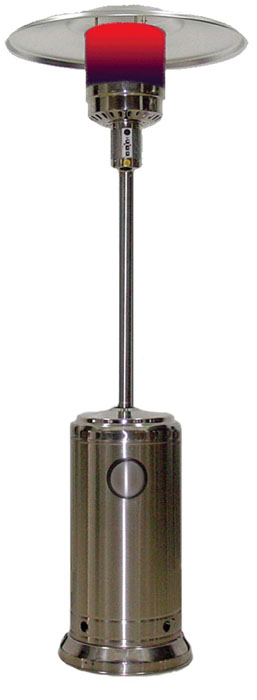 Gas outdoor heaters have become in great demand. They are indispensable in various places that are open-air, in summer cottages, on sports grounds. A distinctive feature of these devices is that they are easy, mobile, freely move into the right place, ensuring heating the surrounding space in diameter to 6 meters. In this case, such devices do not require special installation, it is easily installed and dismantled. The principle of functioning of the gas outdoor heater is based on the radiation of heat waves. Gas from the cylinder is supplied through the gearbox to the safety valve from which it goes into the burner where it flammifies. Burning, it heats the burner, which, emits heat waves, reflected from the reflector. These waves rush down, thereby forming the heating zone.
Gas outdoor heaters have become in great demand. They are indispensable in various places that are open-air, in summer cottages, on sports grounds. A distinctive feature of these devices is that they are easy, mobile, freely move into the right place, ensuring heating the surrounding space in diameter to 6 meters. In this case, such devices do not require special installation, it is easily installed and dismantled. The principle of functioning of the gas outdoor heater is based on the radiation of heat waves. Gas from the cylinder is supplied through the gearbox to the safety valve from which it goes into the burner where it flammifies. Burning, it heats the burner, which, emits heat waves, reflected from the reflector. These waves rush down, thereby forming the heating zone.
Structurally, the heater body is made in the form of a cylinder, with a cylinder placed inside, containing liquefied gas. The hose connecting the cylinder with a burner is located inside the rack. A manual control unit is placed on a metal grid, a hat is located above it - emitter that evenly distributes around the heat. Gas is burned using an injection burner. The combustion zone is concentrated in the metal emitter. Adjusting the thermal power and the flame presence sensor is made due to the availability of the control node.
There are models operating and in propane, and in Bhutan, but there are also those that act only in one form of balloon gas. It is preferable to also acquire a heater operating on two types, since the gases used are different returns depending on the time of year. So, propane is more suitable for cold weather, while Bhutan is better to use in summer.
Safety in maintenance and use Almost all street heaters are guaranteed by the emergency shutdown system, when the flame is fired in the burner, the gas supply is immediately terminated. But such a system is provided not in all models, so installing this kind of device follows a flat horizontal surface.
Street gas heaters were prevalence due to their practicality, safety and efficiency.
We recommend our materials on the topic:













 Start a discussion ...
Start a discussion ...